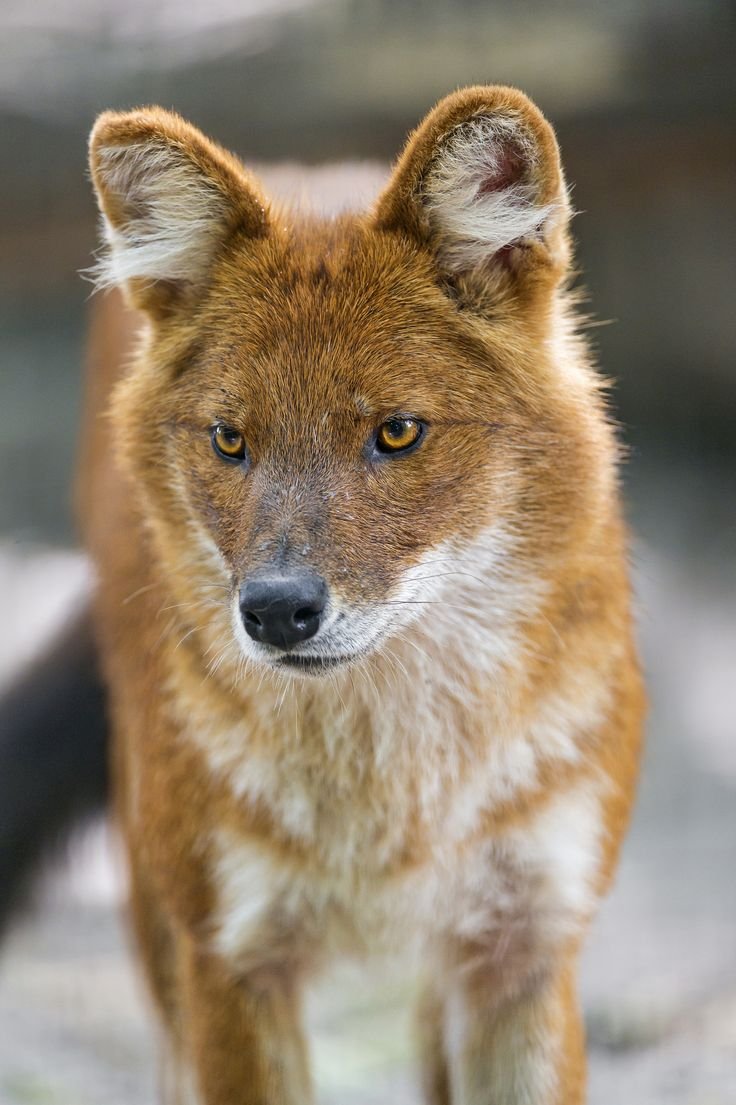
Encountering wildlife can feel a bit like stumbling into an unexpected chapter of a book—every moment is filled with potential surprises. It’s important to know how to react, especially with animals like dholes that can be both curious and wary of humans. So, whether you’re an avid hiker, a nature enthusiast, or just someone who loves exploring the great outdoors, let’s break down what to do if you ever find yourself face-to-face with a dhole.
Understanding the Dhole
Before we dive into what to do if you run into a dhole, it’s useful to know a bit about them. Dholes are medium-sized canids native to Asia, often recognized by their reddish-brown fur and unique vocalizations. They’re social animals, living in packs that can range from a small family to a large group. This social structure is key to their hunting strategy and overall behavior.
You might think of them as the wolf’s less famous cousin. While wolves are known for their large packs and howling songs, dholes communicate with a series of whistles and screams, which sound quite different and can be a bit surprising if you hear them for the first time. Their packs work together to hunt prey, often targeting deer and wild boars. This cooperation can help you understand why they may respond to humans or other animals based on their social dynamics.
But don’t let their curious appearance fool you—dholes can be elusive and cautious around humans. In the wild, they are often more afraid of you than you might be of them. Understanding their behavior can help you feel more at ease if you ever encounter one.
Stay Calm and Observe
If you find yourself facing a dhole, the first thing to remember is to stay calm. Your heart might race, but panicking can make things worse. Instead, take a moment to breathe and observe the situation. Is the dhole alone or with a pack? Is it showing any signs of aggression, or does it seem just as curious about you as you are about it?
Here’s the thing: dholes are usually more interested in their surroundings than in humans. Watching how it behaves can give you clues about what to do next. If the dhole appears relaxed—sniffing the air or looking around—chances are it’s not feeling threatened. If you can, observe from a distance. This keeps both you and the animal at ease.
Additionally, taking a moment to appreciate this rare sight can be truly rewarding. Think of it as a great opportunity to connect with nature. You might even find yourself feeling a bit of awe as you watch this unique creature in its natural habitat.
Do Not Approach the Dhole
One of the most important rules when encountering wildlife is to never approach or try to feed the dhole. Unlike domesticated dogs, dholes are wild animals and can behave unpredictably. Approaching them might make them feel cornered, leading to defensive behavior.
Instead of moving closer, keep your distance and allow the dhole to decide how to interact with you. If it feels threatened, it could pack up and move away, which is exactly what you want! If the dhole is part of a pack, approaching could create more tension. Remember, these animals have a strong social structure, and their reactions can be influenced by pack dynamics.
If the dhole approaches you, it’s crucial to remain still. Avoid sudden movements, which might startle it. If the animal gets too close for comfort, you can slowly back away while keeping your eyes on the dhole. This helps you avoid provoking any unwanted behavior while still being aware of its actions.
Use Your Voice Wisely
In situations where wildlife is concerned, your voice can be a powerful tool. You might be wondering how speaking can affect an encounter with a dhole. Well, speaking softly can help communicate that you’re not a threat. Loud noises or yelling could alarm the animal and cause it to react defensively.
Utilize a calm and gentle tone if you feel the need to talk. This might sound odd, but many animals can pick up on your energy. If you remain relaxed, the dhole may sense there’s no reason for concern. Think of it like soothing a nervous dog—your calmness can help diffuse the situation.
If you’re part of a group, it’s best to keep conversations to a minimum to avoid startling the dhole. Instead, use hand signals to communicate silently with others, like if someone should back away or keep still.
Know When to Leave the Area
After observing the dhole, there may come a time when it’s best to leave the area entirely. This could be especially true if you notice the dhole appearing agitated or if it starts to move towards you in a more assertive manner. Trust your instincts! If something feels off, it’s always better to err on the side of caution.
Leaving the area doesn’t mean you have to run away in panic. Instead, make your exit calmly and slowly. Keep your eyes on the dhole, but don’t make direct eye contact, as this can be perceived as a threat. Maintaining a non-threatening posture while backing away will help convey that you mean no harm.
As you leave, take in the surroundings one last time. Remember, you’re in the dhole’s territory, and it’s incredibly important to respect that by giving it space. This is its home, and you’re just passing through.
Report Your Encounter
Once you’ve safely distanced yourself from the dhole, consider reporting your encounter to local wildlife authorities or park rangers. This information can be valuable for monitoring wildlife behavior and ensuring conservation efforts. Plus, it can help keep other visitors safe by letting them know that dholes are in the area.
Sharing sightings may seem small, but it contributes to a larger understanding of these incredible animals and their habitats. Whether you’re in a national park or a wildlife reserve, your first-hand experience might help others enjoy their visit while staying safe.
In some cases, if the dhole appears to be acting strangely or shows signs of distress, reporting it can help authorities respond appropriately. They might need to investigate further to ensure both the animal’s and the public’s safety.
Embrace the Experience
Finally, encountering a dhole in the wild can be an extraordinary experience. It’s a reminder of the beauty and unpredictability of nature. Rather than viewing it as a frightening moment, try to embrace it as an opportunity to connect with wildlife.
Consider reflecting on your experience later. What did you learn about dholes? How might you approach future wildlife encounters? Being prepared and knowledgeable not only enriches your own outdoor adventures but helps you spread awareness about these fascinating creatures.
Next time you head out into nature, remember to carry this knowledge with you. You never know when you might catch a glimpse of a dhole. Just like any adventure, it’s all about being prepared and keeping a sense of wonder along the way.
By understanding how to navigate these encounters, you’ll not only keep yourself safe but also foster a greater appreciation for the wildlife that shares our world. And who knows, maybe your next encounter with a dhole will leave you with a story to tell for years to come!

